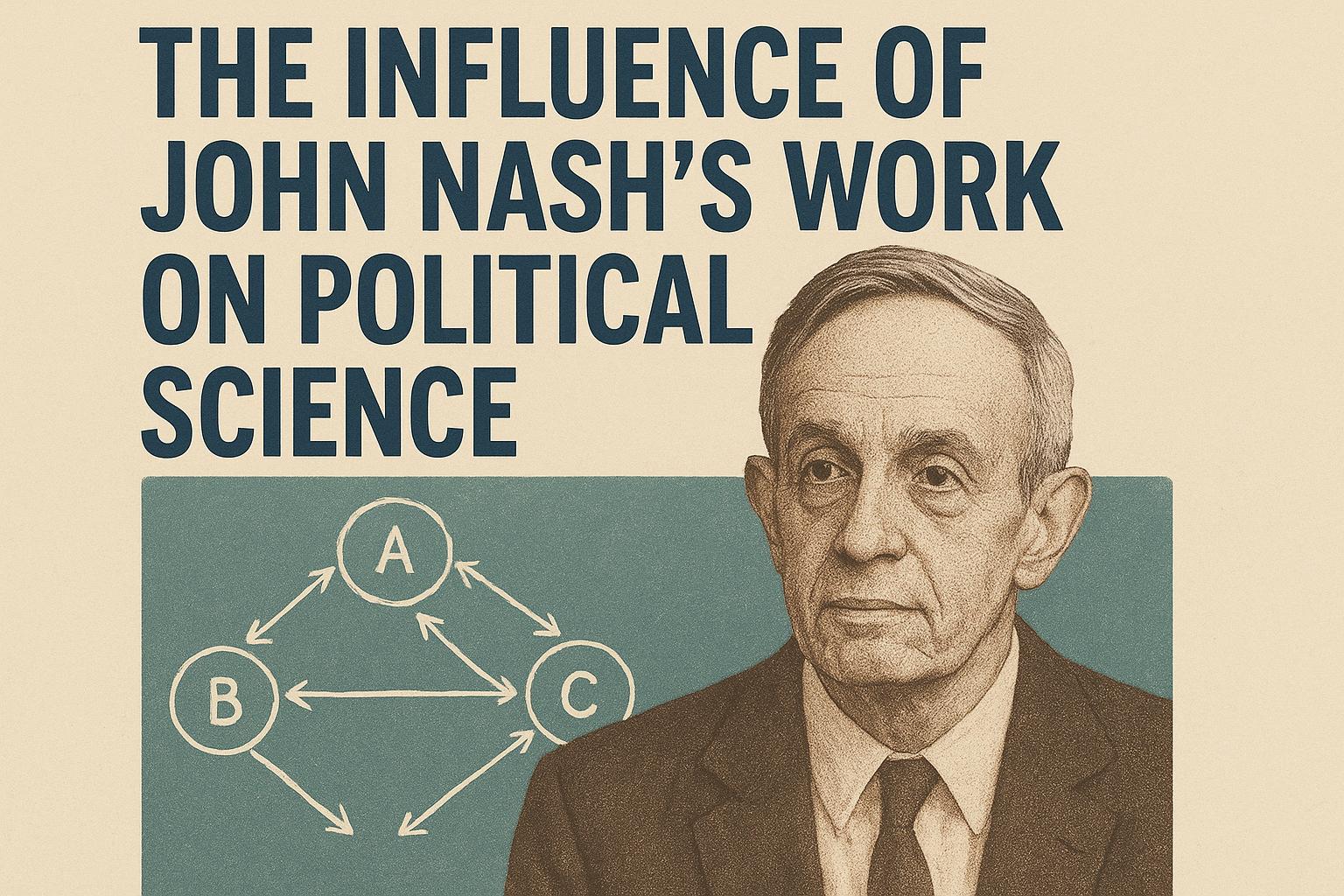The Influence of John Nash’s Work on Political Science
John Nash, a celebrated mathematician, made groundbreaking contributions to various fields, most notably through his work in game theory, which has profoundly influenced political science. Although game theory existed before Nash, his refinement and conceptual breakthroughs have left a long-lasting impression on this area of study.
Game Theory and Political Science
Game theory serves as a mathematical framework designed to analyze competitive situations where outcomes depend on the actions of two or more players. In the context of political science, this approach has become crucial for understanding strategies in elections, international relations, public policy, and negotiations. Over the years, the incorporation of game theory into political science has reshaped the way political interactions are studied and understood, providing new insights into the complexities of political dynamics.
Nash Equilibrium
One of Nash’s most significant contributions to game theory is the concept of the Nash Equilibrium. According to this theory, in a non-cooperative game involving two or more players, a Nash Equilibrium occurs when each player is aware of the other players’ strategies, and no player can gain anything by changing their strategy unilaterally. This equilibrium condition has practical implications for the study of political negotiations and conflicts, where entities often settle into stable strategies to avoid retaliation or disadvantageous outcomes.
In political science, the Nash Equilibrium has been used to model the strategic interactions between political entities, such as political parties, nations, or interest groups. It has become an essential tool for analyzing a wide range of political scenarios, from electoral competitions to international negotiations.
Applications in Political Strategy
Nash’s theories play a significant role in explaining electoral politics, voting behaviors, and campaign strategies. Political candidates often use mixed strategy approaches, anticipating their opponents’ actions and adjusting their policies and advertisements accordingly. By examining these strategies through the lens of game theory, political scientists and strategists can gain insights into the factors that drive voter behavior and influence election outcomes.
In international relations, the application of Nash equilibria assists in understanding why countries may choose stable strategies, such as arms races or mutual disarmament. Game theory provides a framework for analyzing the motivations behind these choices, allowing scholars and policymakers to predict different scenarios and devise strategies that mitigate potential conflicts.
International Relations and Conflict Resolution
Nash’s work provides valuable insights into the reasons parties in international conflicts may reach or fail to reach agreements. Game theory models facilitate enhanced diplomacy by outlining potential compromises or revealing the motives behind certain aggressive stances. For instance, Nash’s theories can clarify why states might cooperate to avoid mutually assured destruction in nuclear standoffs. By employing game theory, diplomats can evaluate different negotiation strategies, identify the most promising paths to compromise, and work toward de-escalation.
Moreover, Nash’s contributions have inspired further research into the development of conflict resolution models that seek to achieve stable and lasting peace. Researchers have expanded on Nash’s ideas to propose new strategies and negotiation techniques that address diverse political disputes, from territorial conflicts to trade negotiations.
Nash’s Broader Impact on Policy Making
Beyond strategic interactions, Nash’s insights extend to the formulation of public policy. The complex dynamics of policymaking, where governments, corporations, and other stakeholders have conflicting interests, benefit from Nash’s models. By applying these principles, policymakers can evaluate the stability and feasibility of proposed policies in a competitive governmental landscape.
The use of game theory in policy design allows governments to assess the potential outcomes of different policy options and identify strategies that align with national interests. For example, when dealing with issues such as taxation, healthcare, or environmental regulations, game theory can help policymakers anticipate the reactions of stakeholders and craft policies that promote cooperation and long-term stability.
Critiques and Limitations
Despite its utility, critics argue that the assumptions of rationality inherent in game theory may not always hold true in real-world political contexts, where decisions can be driven by emotion, misinformation, or irrationality. Consequently, some scholars caution against overreliance on game theory as a predictive tool, emphasizing the need to consider the broader social and psychological factors that influence political behavior.
Nonetheless, Nash’s contributions provide a foundational toolset for academic and practical analysis in the political sphere. By offering a structured approach to understanding strategic interactions, game theory enriches political analysis, even as it acknowledges its limitations.
Further Reading
For those interested in exploring the intersection of Nash’s work and political science further, academic journals and online platforms provide detailed case studies and theoretical expositions. Numerous scholarly articles can be found on research databases such as JSTOR, offering a comprehensive look at how Nash’s theoretical innovations continue to influence modern political analysis.
The ongoing impact of John Nash’s work on political science underscores the significance of interdisciplinary approaches in understanding complex social phenomena. As researchers continue to build on his legacy, the integration of mathematics and political science promises to yield new insights into the workings of political systems and the strategies that drive them.
This article was last updated on: October 25, 2025

